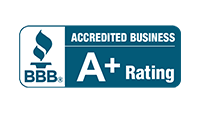
Paid search can be a real puzzle, with all its moving parts and seemingly endless options. However, by following a structured approach to building your paid search account, you can keep things organized efficiently and, most importantly, avoid head-scratching moments. Think of it as putting together a jigsaw puzzle – it might seem daunting at first, but once you get the hang of it, you’ll be piecing things together like a pro in no time.
Why are Paid Search Account Structures Important?
Let’s take a step back – what is even meant by “account structure,” and why is it so important?
- The way you structure your paid search account allows you to control:
-
- How you want your ads to be triggered
- When and where you want them to appear
- The benefits of a well-structured account include:
-
- Relevant searches triggering your ads
- Better quality scores leading to better results and lower ad prices
- Increased organization and easier optimization
- Keep in mind that having an unorganized account:
-
- Results in lost opportunities
- Can make optimizing for better results impossible
- Leads to frustration and loss of sanity
Structuring Your Paid Search Account
Is there a secret to the perfect Google Ads account structure? No, there’s no secret, but there a few tried-and-true methods that can help you get there.
Website Heading
The first method is the “Structure your Google Ads account like your website” strategy. If you have a well-organized website, you’re one step ahead. Just follow its lead and structure your Google Ads account the same way.
Products and Services
The next option is the “Organize by Products/Services” method. This method is self-explanatory – group your campaigns by your products or services. For example, if you sell tennis gear, you should create a campaign for each item you sell, such as tennis rackets, balls, clothing, etc. You can even create sub-groups based on brands, size, or gender. Just make sure to give some thought to which items are most in demand and adjust your budgets accordingly.
Location
And finally, there is the “Location, Location, Location” approach. If location is a big factor for your business, you’ll want to structure your account based on that. For example, if you’re a law firm with multiple locations across the Midwest, you’ll want to create separate campaigns for each location. Or, if you sell development courses in major cities, you can create campaigns for each city and only target people within a specific radius.
A Guide to Paid Search Success
Now that you’ve structured your Google Ads account, you’ll want to start thinking about what your account consists of.
- Campaigns: These are the building blocks of your account structure. Think of them as the broad categories of your advertising. You can organize your ad groups, keywords, ads, and landing pages with just a few campaigns to get the desired results. And remember, the happier Google is, the lower your costs will be!
- Ad Groups: These are the subcategories within your campaigns. Each ad group should contain keywords, text ads, and a landing page that are all highly relevant to each other. Spread your budget evenly across a few ad groups.
- Keywords: These are the magic words that will trigger your ads. When someone types in a “search query” in Google, your ad will appear if it matches your keyword. But be careful when choosing keywords because you could end up paying for irrelevant searches. That’s why thorough research and optimization are key.
- Negative Keywords: These are the unsung heroes of account structure. These keywords help you avoid spending money on searches irrelevant to your business. For example, if you sell software, you don’t want to appear for “cat memes” in search results.
- Ad Text: This text will appear when your ad populates. Make sure it’s eye-catching and highlights the benefits of your offering. And, of course, follow Google Ads guidelines so Google doesn’t frown upon your efforts.
- Landing Page: This is the final destination of your journey. Landing pages are where you want to send your visitors after they’ve clicked your ad. Make sure each landing page is highly relevant to the keywords and ad text that led them there. And remember – the better your landing pages, the better your results will be!
Ad Groups
To create your ad group, head over to the “Ad groups” tab in Google Ads, click on the “+Ad Group” button, and give it a title that describes the ads in this specific group.
Keywords
Now it’s time to choose the perfect keywords for your ad groups. Just remember, keywords aren’t just any random words you can think of – they should show a clear intention to buy something.
Organize your ad groups and keep a handy list of keywords in an Excel document. Then, use Google’s Keyword Planner or a similar tool to find keywords that match each ad group. It’s a good idea to start small and not overwhelm your ad groups with too many keywords (aim for 10-20).
And remember match types. You can use a combination of broad, phrase, and exact match types to target your audience more effectively. Remember that the more restrictive the match type, the higher the bid should be.
Ad Copy
Here are a few tips to keep in mind when crafting your ad copy:
- Character Limits: Google will be your friendly reminder when you’ve hit the character limit, but just in case you forget: the headline gets 25 characters, the two description lines and display URL get 35 characters each, and your destination URL is free from any restrictions.
- Relevance is Key: Your ad text should align with the keywords and landing page it’s directing to. If you’re bidding on “tennis shoes,” but your ad reads “Women’s Tennis Shoes,” male searchers won’t be interested and won’t click on your ad. Display your keywords prominently in the headline and description lines.
- Best Practices: There are tons of ways to make your ad stand out from the competition, like using special offers with numbers (people love numbers), adding a period at the end of description line 1 (which merges line 1 with the headline), capitalizing each letter, and more.
- Ad Approval Guidelines: Don’t risk getting your ad disapproved! Follow Google’s ad approval guidelines to avoid delays and negative performance.
Landing Pages
Ideally, you’ll have landing pages specifically created for each ad group. If not, invest time and resources in creating ad group-specific landing pages. If the landing page isn’t relevant to the ad clicked on, chances are high that the searcher will bounce back to Google.
Conclusion
The best paid search account structure is easy to manage, track, and optimize. By carefully selecting the right pieces of the puzzle, you can maximize your ad performance and achieve your desired ROI. Once your account is in place, by utilizing the right approach and tools, you can effectively reach your target audience and drive conversions through paid advertising.





